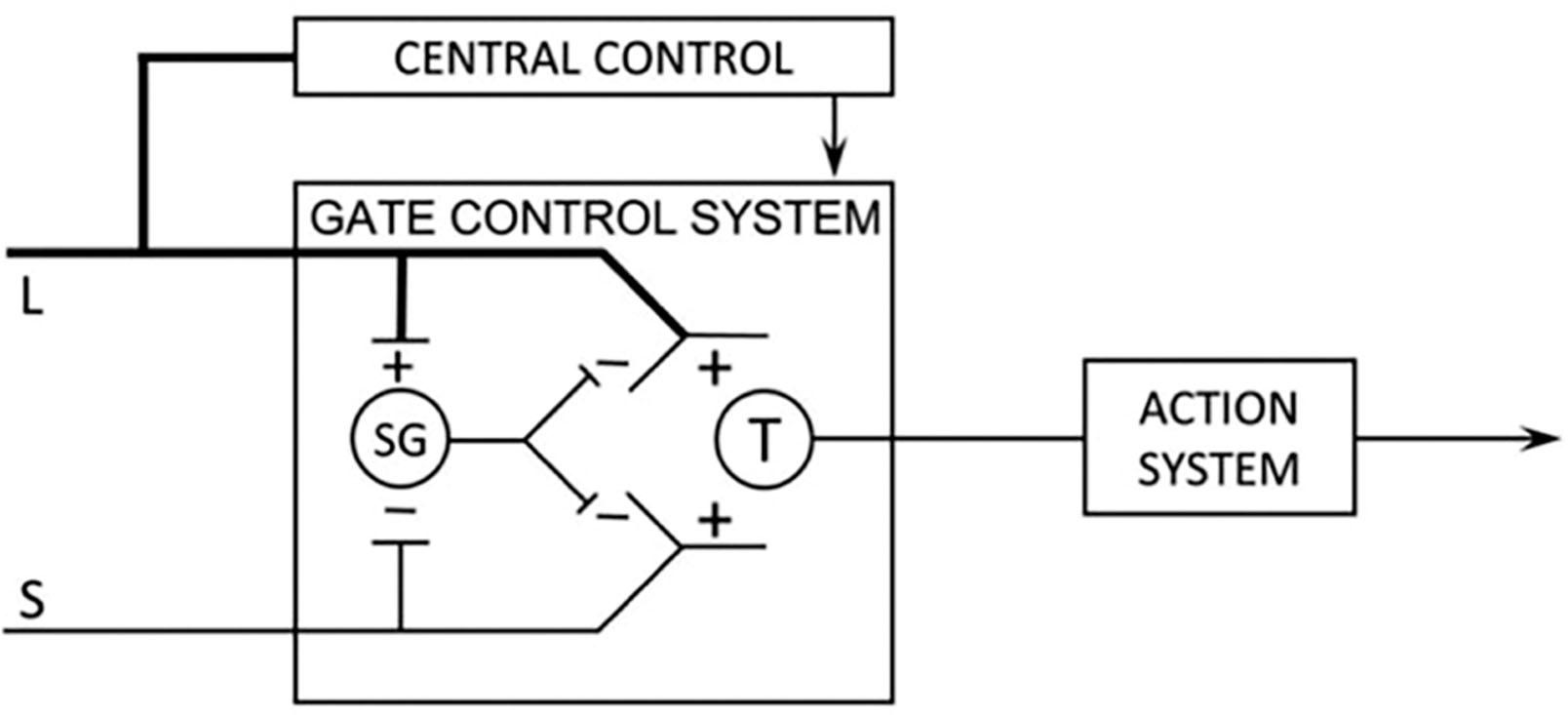Physical Address
304 North Cardinal St.
Dorchester Center, MA 02124
The underlying mechanism of peripheral nerve stimulation (PNS) has always been thought to be an extension of the “Gate Theory of Pain,” traditional spinal cord stimulation (SCS) applied to peripheral nerves. While this theory may still hold true, recent studies have shown that the Gate Theory alone cannot solely explain the principles behind PNS.
A thorough discussion of neuromodulation first requires an understanding of the Gate Theory developed by Ronald Melzack and Patrick Wall in 1965. In its simplest understanding, nonnociceptive inputs “close the gate” to nociceptive inputs at the dorsal horn of the spinal cord, preventing the transmission of pain signals. In a practical manner, this theory is commonly demonstrated with children at the park: a child may fall off a swing, sustaining a painful abrasion to their knee. The child’s caregiver, sensing their child’s distress, will commonly start rubbing the affected area in an effort to distract the child from their pain while at the same time decreasing the pain transmission.
On a molecular level, the transmission of pain first begins with a nociceptive input sensed by the afferent nerve. The nociceptive inputs are carried both by the thinly myelinated Aδ and unmyelinated C fibers. These small nerve fibers inactivate inhibitory interneurons at the dorsal horn of the spinal cord, “opening the gate” and allowing for the transmission of pain. If there is large Aβ fiber stimulation (from pressure, vibration, etc.), these myelinated A fibers will activate those inhibitory interneurons, “closing the gate” and blocking the transmission of pain ( Fig. 3.1 ).

In a patient with chronic pain, these pain pathways have become aberrant. They have undergone central sensitization. While the exact mechanism of central sensitization and the influence of SCS is not yet quite fully understood, some theories on how it modulates neuropathic pain are widely accepted. In the dorsal horn, after nerve injury, there has been shown to be an increase in activity of the wide dynamic range (WDR) neurons. When WDR neurons increase their activity, they produce less of the inhibitory gamma-aminobutyric acid (GABA) neurotransmitter and produce more of the excitatory glutamate neurotransmitter. SCS decreases WDR activity, therefore increasing the concentrations of GABA and decreasing glutamate in the dorsal horn.
PNS is defined as electric stimulation performed on the peripheral nerve system and applied to a specific nerve. These same principles noted above for SCS are being applied to peripheral nerves in PNS. In fact, much of the technology originally developed for SCS is currently being tested with various peripheral nerves to treat refractory chronic pain conditions that are not responsive to conventional treatments. PNS involves electrically stimulating the given peripheral nerve by placing an electrode adjacent to it.
Electrical stimulation has been shown to block afferent Aδ and C fibers. Torebjork and Hallin showed in 1973 that stimulation of the radial and saphenous nerves can decrease the transmission of inputs through Aδ and C fibers. However, in slight contradiction, Swett in 1983 demonstrated that the analgesic effect of PNS was caused by stimulation that was below the threshold for a nociceptive input but above the baseline stimulation for perception.
In 2004, Chae et al. showed that intramuscular electrostimulation decreased pain perception in a subset of patients. There is also a component of modulation of specific molecules. Chronic pain has been shown to increase the local levels of endorphins and prostaglandins, increasing blood flow to that area. PNS may decrease the level of neurotransmitters and other markers of inflammation, decreasing the transmission of pain. Lastly, PNS may decrease ectopic discharges and Wallerian degeneration of peripheral nerves.
As mentioned previously, SCS interferes with WDR neurons in the dorsal horn of the spinal cord, decreasing the transmission of pain. Our current understanding is that PNS may also decrease the activity of WDR neurons. In another mechanism, an animal study demonstrated that PNS may induce the Arc protein, decreasing the activity of AMPAR (a glutamatergic receptor in the central nervous system that regulates fast synaptic transmission), decreasing inflammatory mediators. PNS has also been shown inhibit spinothalamic tract (STT) cells. The STT cells function to transmit sensory innervations from the periphery to the brain.
PNS has been shown to effect regional cerebral blood flow (rCBF) in patients who have undergone neurostimulation. Positron emission tomography (PET) scans have allowed us to detect altered levels of rCBF in the contralateral somatosensory cortex, anterior cingular cortices, thalamus, and dorsal rostral pons.
Studies so far have shown that PNS modulates the transmission of pain peripherally and centrally. Whether it interacts with the transmission of pain signals or influences the levels of inflammatory mediators, there is not one set mechanism that truly explains how PNS modulates pain. More research is needed into this topic, and, as our technology improves, our understanding of how PNS works will improve.
Become a Clinical Tree membership for Full access and enjoy Unlimited articles
If you are a member. Log in here